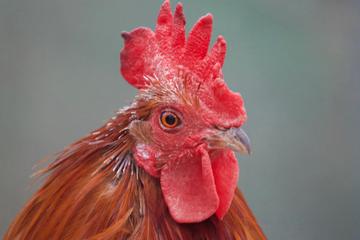Sexual selection is a powerful evolutionary mechanism, driven by the competition between individuals for reproductive opportunities. It is responsible for an array of extravagant traits in animals, from armaments like deer antlers to ornaments like peacock feathers. It is these traits that are used by animals to signal to potential partners that they are strong or healthy, and therefore have good genes to pass on.
However, we know relatively little about how patterns of sexual selection change through time, particularly over short time scales; for example, courtship effort and mate choice preferences can often change dramatically in a few hours or days. One of the most rapid changes in preference is seen in female fiddler crabs (Uca mjoebergi), who prefer larger males at the beginning of a 5-day mating period and smaller at the end. These patterns can affect animals and their traits, driving the rate at which they adapt, evolve alternative reproductive tactics, or maintain differences in competitive traits. Generally, it is thought that sexual selection is stronger when individuals vary a lot in their success at attaining mates.
Using mating data from insects, amphibians, mammals, and birds, researchers at the Department of Biology, University of Oxford, showed that mating success can change rapidly in all these groups over short time scales. They then developed models to investigate whether the patterns seen were a result of random mating choices – finding that largely, the answer was that they were. Dr Rômulo Carleial, lead author of the study, said:
We found that variance in reproductive success – a prerequisite for sexual selection – decreases sharply over time in multiple animal species, and that this can be mostly explained by individuals mating at random rather than competitive differences. This is interesting because variance in reproductive success (i.e. the opportunity for selection) has been often used as a proxy of the strength of sexual selection, which could be misleading.
Not all hope is lost for this metric, however; by combining simulations with empirical data, we can begin to disentangle variation in reproductive success arising randomly versus through sexually selected traits or strategies. In fact, we found evidence that in some species intrasexual competition helps to slow the temporal decline in the opportunity for selection.

A red junglefowl (Gallus gallus). Junglefowl are polygynandrous, meaning both males and females have multiple mates.
Image: Tom Pizzari
The results show that null models are important to understand the biological significance of variation in reproductive success, and whether competitive mechanisms are the driver behind such variation. Variation in reproductive success and the opportunity for selection are fundamental parameters in ecological and evolutionary theory, and are often used for managed and threatened populations. Effects of high variation in mating success can seem contradictory. On one hand, extinction risk could be lower if high quality males mate and pass on good genes – but fewer individuals reproducing can reduce genetic diversity and limit adaptability to environmental change. This study joins a growing body of research that suggests using opportunity of selection as an empirical indicator of actual selection can be problematic, and understanding the reason behind variation is key to assessing a population’s viability.
While variance in reproductive success declined over a short time scale for almost all species, this was not the case for all – suggesting potential for key differences across species’ mating dynamics. Next, researchers aim to explore how more direct measures of sexual selection on competitive traits like body size and ornamentation vary over time.
To read more about this research, published in Nature Communications, visit: https://doi.org/10.1038/s41467-023-36536-7.